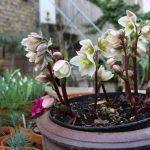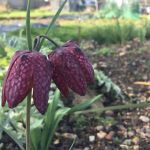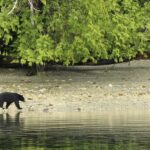Over the last year we’ve seen a wonderful increase in the number of people demanding action to save our planet and all life on it. From rewilding agricultural land as a better way to produce food, keeping roadside verges wild, an increase in true wildlife friendly gardens, reduction in plastic use and more.
My worry is that amongst all of that drive I’ve barely seen any mention of what I feel is the most important activity we should all be doing, and that’s a huge focus on protecting what little wild spaces that do still exist. And preferably, expanding them again (something rewilded agricutural land does contribute to).
I’ve been thinking this for some time but watching a programme last night on Borneo’s wild areas. The camera crew were filming proboscis monkeys (Nasalis larvatus) jumping into a river to cross it in the middle of a lush jungle. Then, they notice an orangutan (Pongo pygmaeus), pointing out this endangered species is being pushed to the edges of its habitat. At which point the camera pans up to show this:


They aren’t in a jungle as you’d imagine at all, but a tiny fragment of what’s left, running along the sides of the river. The forest is gone, replaced by row upon row of farmland. On seeing this I felt utter despair. What have we done to this planet?
In the UK, the situation is the same, we have only tiny pockets of wild space left, our lands are now a false representation of green farm fields, not natural, liveable habitat at all. Even the UK’s National Parks are a lie, they don’t really include natural habitat for wildlife to roam free in, unlike in the US where parks I’ve visited like Yosemite are more about the wildlife. In our heads we probably believe, as I used to, that around the world there must be more wild habitats of huge size. The harsh reality is that we have almost destroyed all of it.
For wildlife to live it needs pure habitat, with barely any human interference over large expanses of land – miles and miles for animals to roam. Making wild habitats the single most important thing to protect and allow to expand again – nature can do it, if we just step back and let it.
Unfortunately, trying to find ways to help make this happen remain painfully hard to find. Do you donate money to charities like the WWF, World Land Trust and locally, the UK’s Wildlife Trusts, RSPB, National Trust and Woodland Trust? The answer is yes to these but alone it’s not enough. So what about Governments too, do we move into politics more? Do we donate to the parties we think will have the most effect at Government level? Is that even going to be enough to have impacts around the world now the UK stands alone? I doubt it.
Really Governments should be stepping in to say enough is enough, 50% of all land should be ring fenced as wild natural habitat. Such an obvious and simple step for them to take. Are any doing that? Please let me know.
It’s a desperate moment for life on this planet. Already pushed to the literal edges of its habitat and existence.
I even find it disheartening when I hear – so often – people say “do it for the next generation”. It is such a human centric view, what about the animals, insects and plants? This is one phrase I would not like to hear in this decade. Do it for all life, the wildlife we are here to protect and for us.
It’s so easy, so why isn’t it happening?




Excellent article – I am sad that so few are listening even now!
Thanks Helen, it is depressing, as every day goes on it feels like all hope is lost.
There is a little hope at iNaturalist. A different filter bubble of people who are interested in wild plants and animals – mixed with a few What is this plant in my new garden?
I’d quite forgotten what it’s like to see the U.S. rated higher than the U.K. on pretty much anything. Yes our national parks are spectacular. Do come visit!
They’re amazing. I’ve visited most in California now but so many more to see!